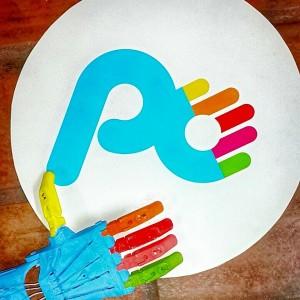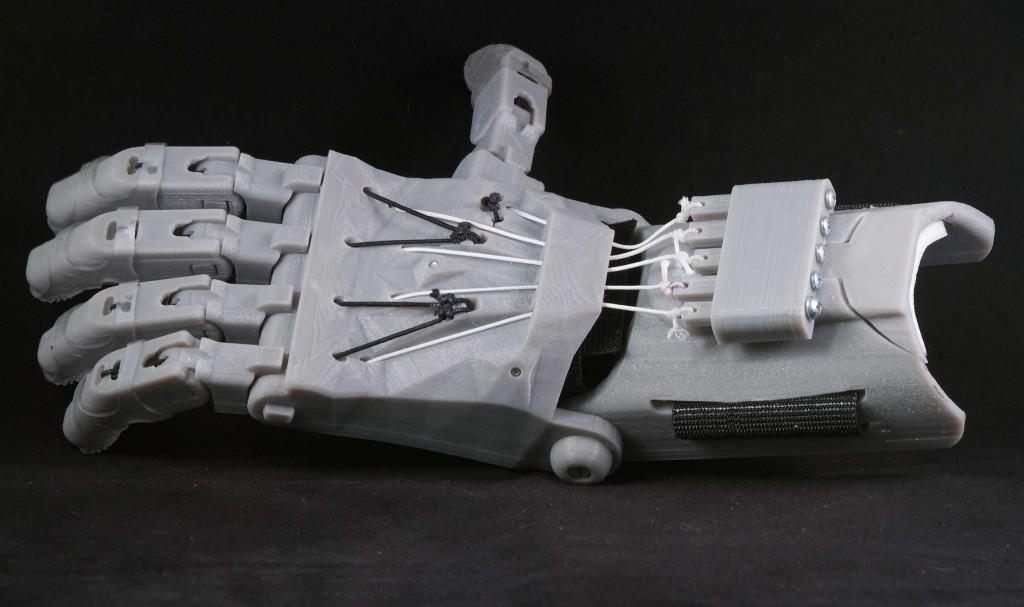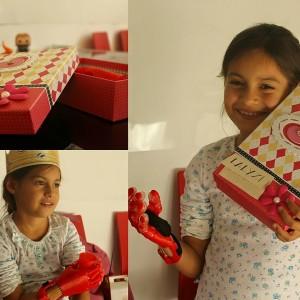 In the States, the e-NABLE model is pretty straightforward: people who need hand prostheses ask for help, and e-NABLE asks their network of volunteer 3D printers to deliver them their hand. Unfortunately what works for the United States isn’t always going to work for every country, a problem faced by medical student Eric Dijkhuis and electronic engineer Fernando Vallese. They stumbled onto Enabling the Future when the charity was in its infancy and counted only two hundred volunteers, as opposed to the more than six thousand that e-NABLE has now. Dijkhuis and Vallese wanted to help and immediately volunteered by offering their services as translators. They hoped that the experience would help them bring e-NABLE to their native Paraguay.
In the States, the e-NABLE model is pretty straightforward: people who need hand prostheses ask for help, and e-NABLE asks their network of volunteer 3D printers to deliver them their hand. Unfortunately what works for the United States isn’t always going to work for every country, a problem faced by medical student Eric Dijkhuis and electronic engineer Fernando Vallese. They stumbled onto Enabling the Future when the charity was in its infancy and counted only two hundred volunteers, as opposed to the more than six thousand that e-NABLE has now. Dijkhuis and Vallese wanted to help and immediately volunteered by offering their services as translators. They hoped that the experience would help them bring e-NABLE to their native Paraguay.
Unfortunately it didn’t quite work out the way that Dijkhuis and Vallese had planned. At the time there were only thirty 3D printers in all of Paraguay, and that included the high-end commercial 3D printers being used by large businesses. Their desire to bring locals 3D printed hands for free by tapping the Paraguay 3D printing community wasn’t helping as many people as the pair had hoped. And they were seeing too many people disappointed by their inability to receive a 3D prosthetic, as they were only able to help about 1% of all of those who contacted them.
The fact was, 3D printing simply wasn’t as common in Paraguay as it was in the United States, and the government didn’t have a system in place to help. And many of the 3D printers that were available to help were owned by hobbyists and new users who weren’t always able to produce suitable 3D printable parts. So Dijkhuis and Vallese decided to do something a little different with their e-NABLE charity that they called Po Paraguay.
“We needed to guarantee the quality of the final product (printed hand) in order to get people to believe from the first moment that 3D printed assistive devices are not only a ‘band-aid’ to a problem, but an actual solution. As you know, QC (quality control) is an issue when your model relies on having people around the country (many amateurs), producing 3D printed assistive devices and that is why our current strategy relies on centralizing the production of the devices, at least in the first stage of the project,” explained Dijkhuis.
Beyond the lack of experienced 3D printers in the country, there were also cultural hurdles that Dijkhuis and Vallese needed to clear. Many of the local disabled community were uncomfortable with the idea of receiving charity. So they set up a system where e-NABLE hands were sold to them at a subsidized price if they were able to pay for them. Each recipient was typically charged between $80 and $150 depending on their financial situation.
This allowed Po Paraguay and their volunteers to afford enough materials to make more hands, and it gave the recipients a feeling of ownership over their 3D printed prostheses. If someone was unable to pay for their hand the Po Paraguay organization would also be in a position to afford to provide it to them for free, or they would find an independent donor to pay for the supplies to print the hand. This has allowed them to maximize the use of the limited 3D printing resources in Paraguay and help as many people as possible in the spirit of the larger e-NABLE organization.
“I’ll keep saying that e-NABLE has changed history and every single one of the volunteers has shaped the future in a good way! A big hug from Po Paraguay and all the users that are infinitely thankful to all of you,” Dijkhuis says.
So far Dijkhuis and Vallese and Po Paraguay have been able to provide thirty-four 3D printed hand prosthesis to their community, and are hoping to be able to help eighty by the end of the year. Most of the recipients were able to pay an average of $120 for the device, and thanks to a growing network of donors stepping up to help, many of them were able to receive their hand for free. And as an organization, Po Paraguay is quickly growing; they currently have eight full-time volunteer workers, but hope to be able to start providing salaries by December. They also have a growing community of part-time volunteers who help them run the Po Paraguay social media channels and offer graphic design help.
If you’re located in Paraguay or simply want to offer them some help, make sure that you stop by their Facebook page for more information on what resources they currently need. Also make sure you drop by the Enabling the Future website to read heartwarming stories about several of the locals that Po Paraguay has been able to help.
Discuss this story in the 3D Printed Prosthetic forum thread on 3DPB.com.
Subscribe to Our Email Newsletter
Stay up-to-date on all the latest news from the 3D printing industry and receive information and offers from third party vendors.
You May Also Like
Precision at the Microscale: UK Researchers Advance Medical Devices with BMF’s 3D Printing Tech
University of Nottingham researchers are using Boston Micro Fabrication‘s (BMF) 3D printing technology to develop medical devices that improve compatibility with human tissue. Funded by a UK grant, this project...
3D Printing Webinar and Event Roundup: April 21, 2024
It’s another busy week of webinars and events, starting with Hannover Messe in Germany and continuing with Metalcasting Congress, Chinaplas, TechBlick’s Innovation Festival, and more. Stratasys continues its advanced training...
3D Printing Webinar and Event Roundup: March 17, 2024
It’s another busy week of webinars and events, including SALMED 2024 and AM Forum in Berlin. Stratasys continues its in-person training and is offering two webinars, ASTM is holding a...
3D Printed Micro Antenna is 15% Smaller and 6X Lighter
Horizon Microtechnologies has achieved success in creating a high-frequency D-Band horn antenna through micro 3D printing. However, this achievement did not rely solely on 3D printing; it involved a combination...
































